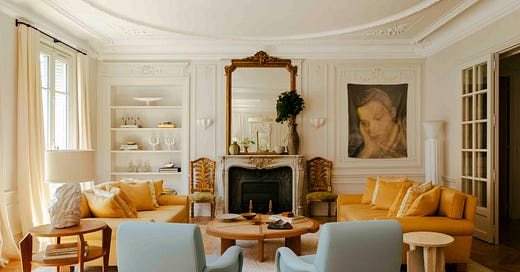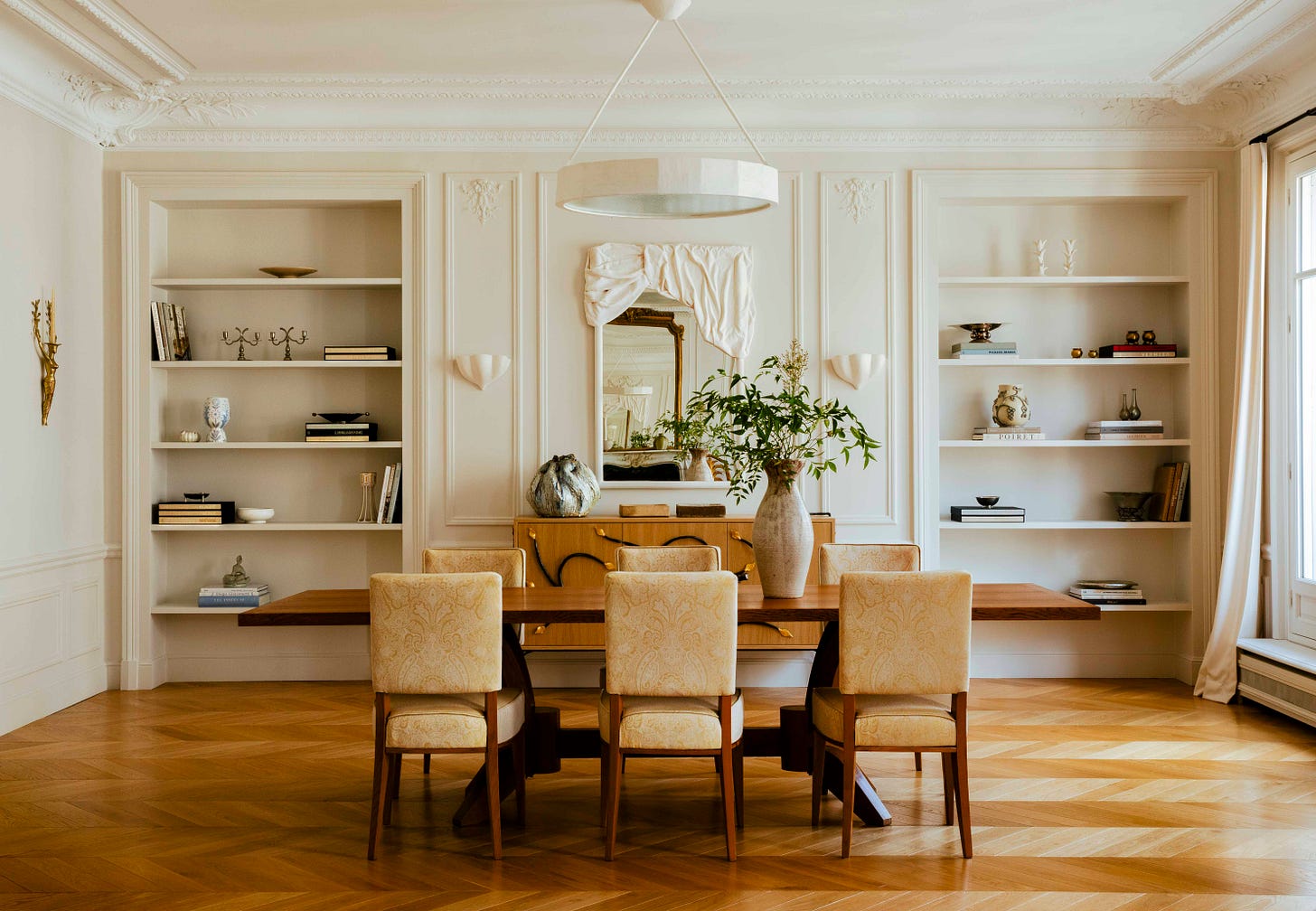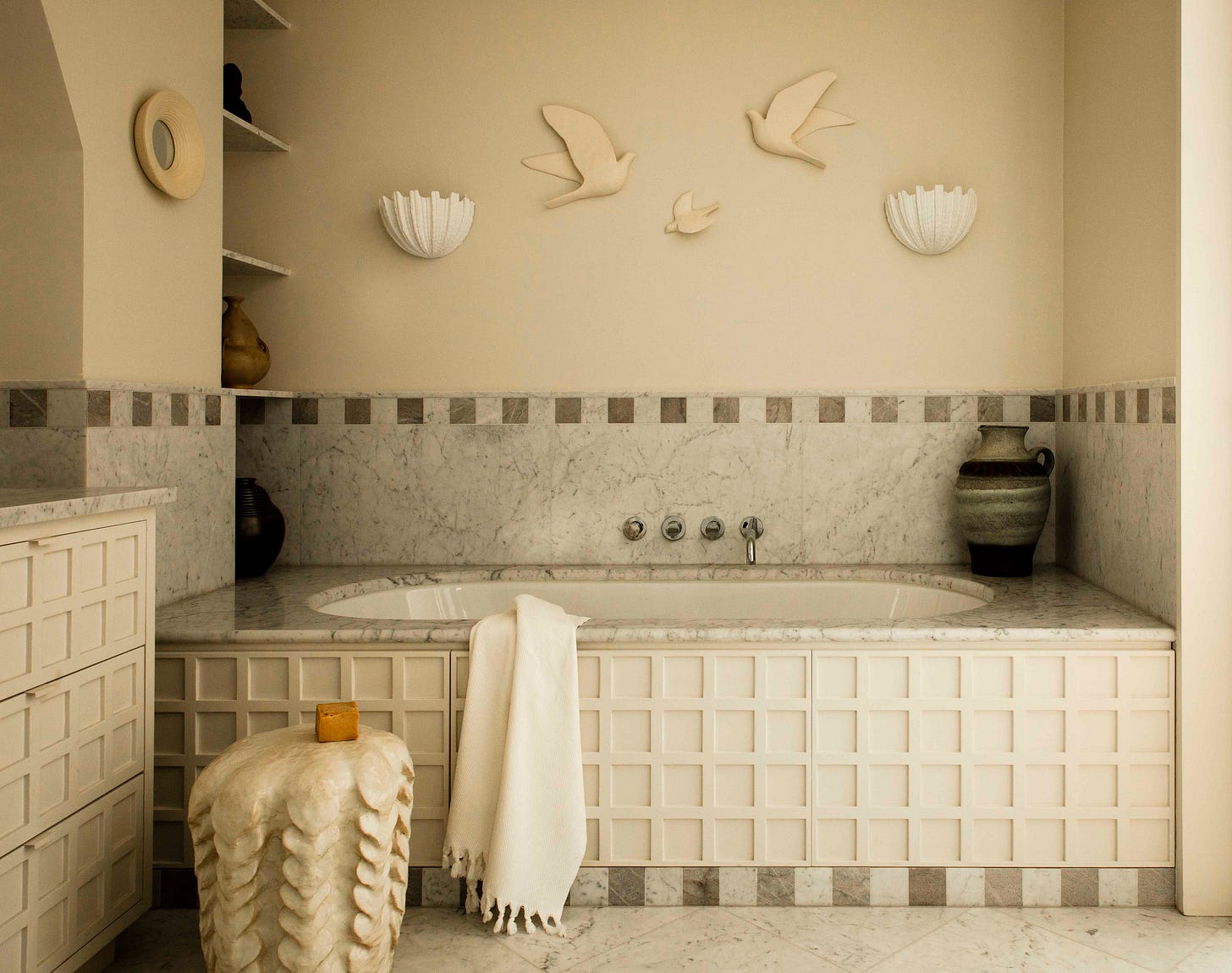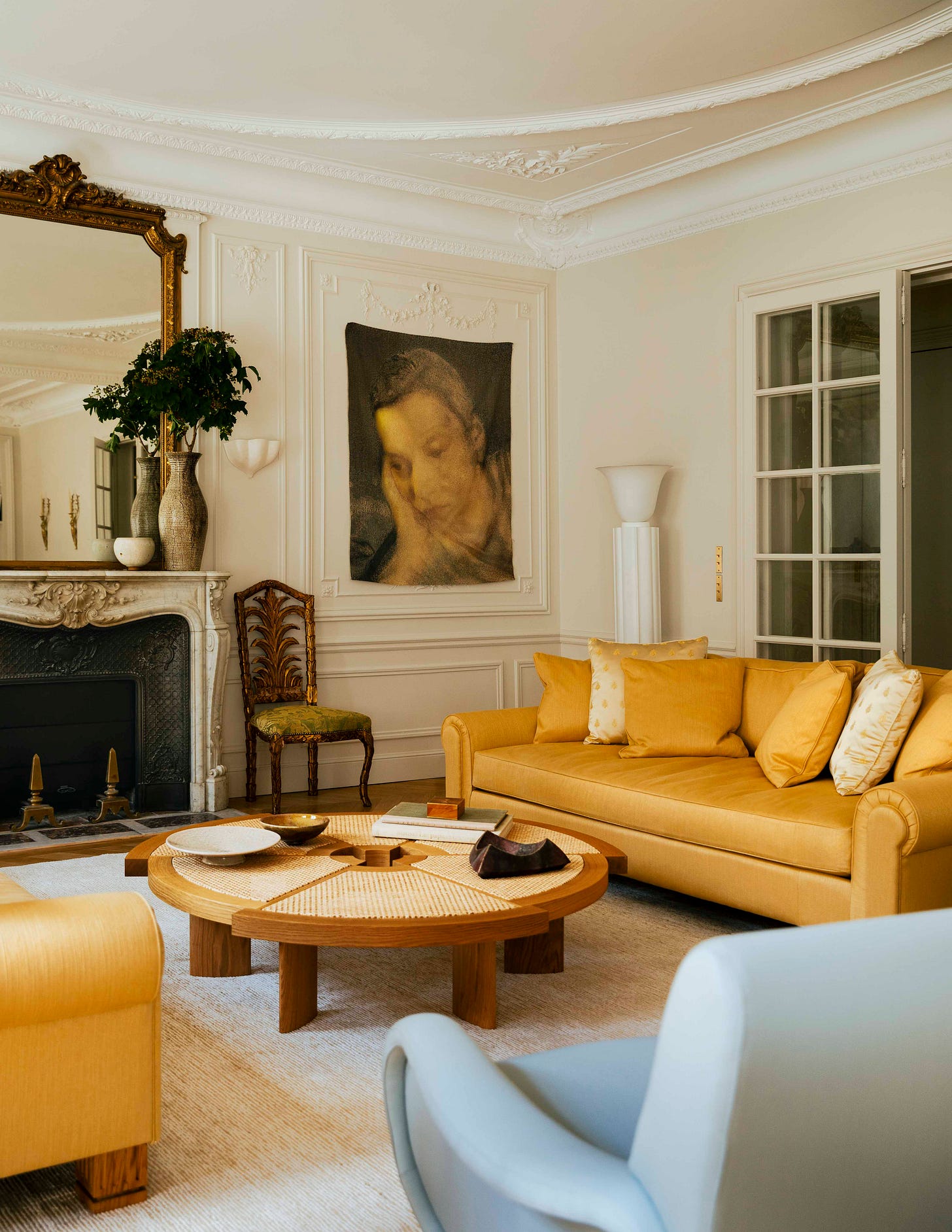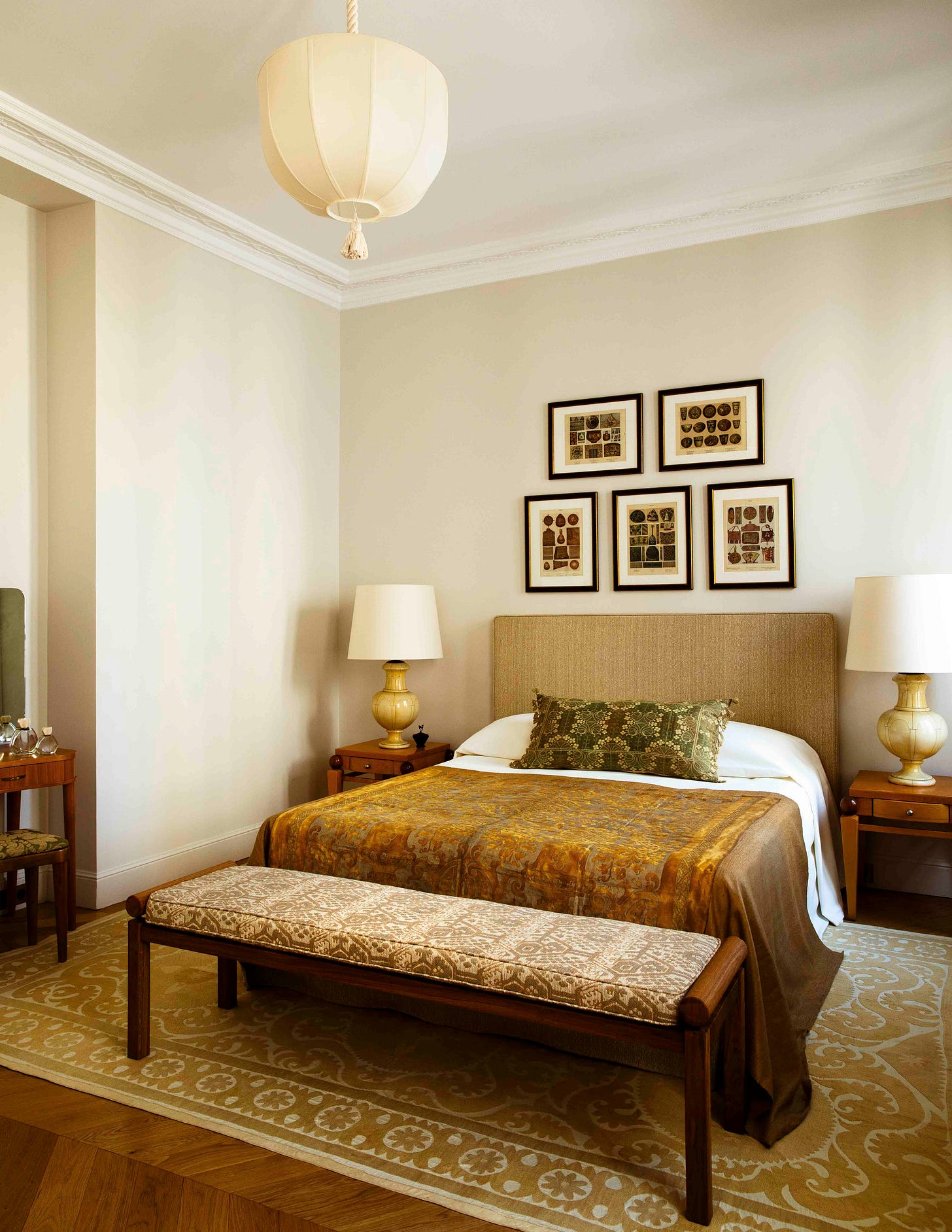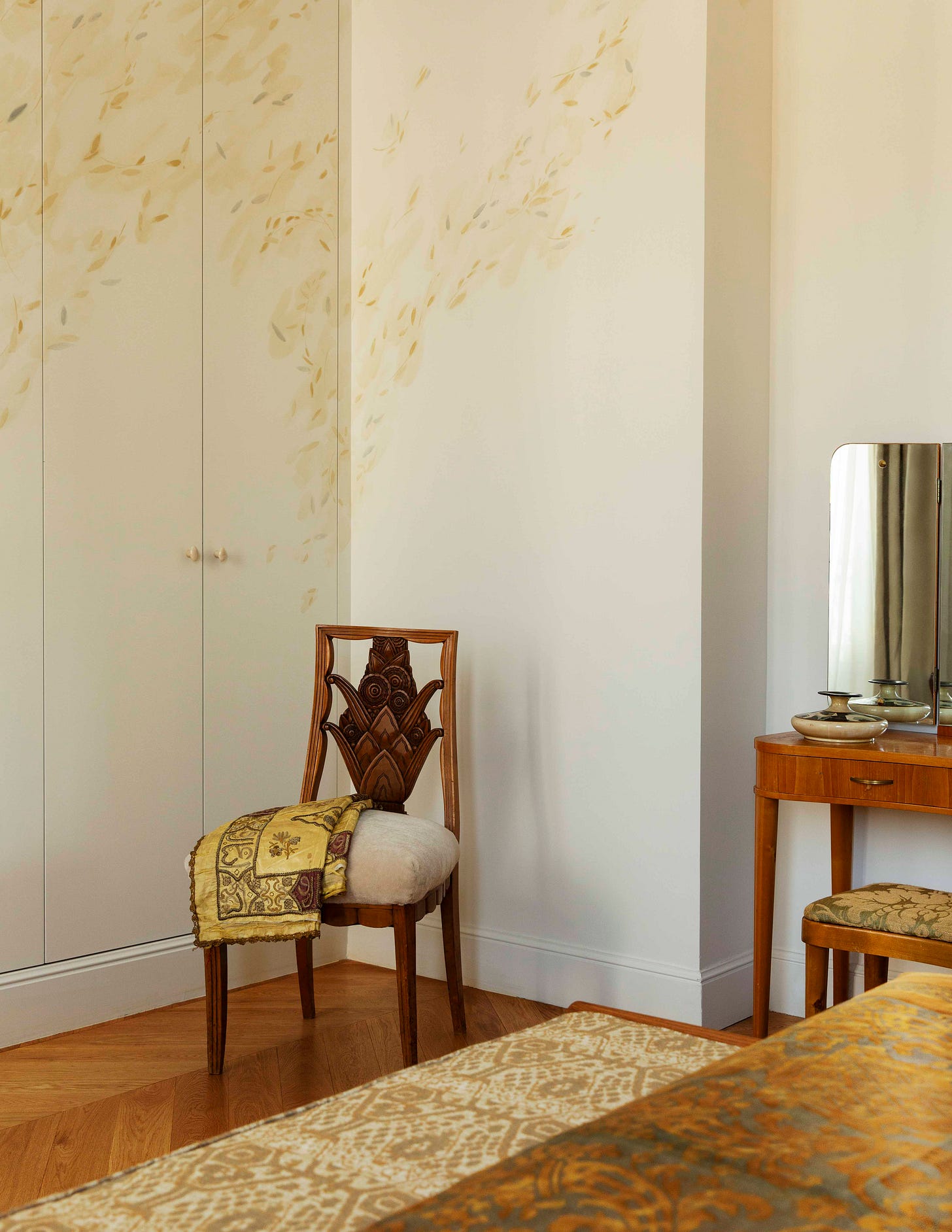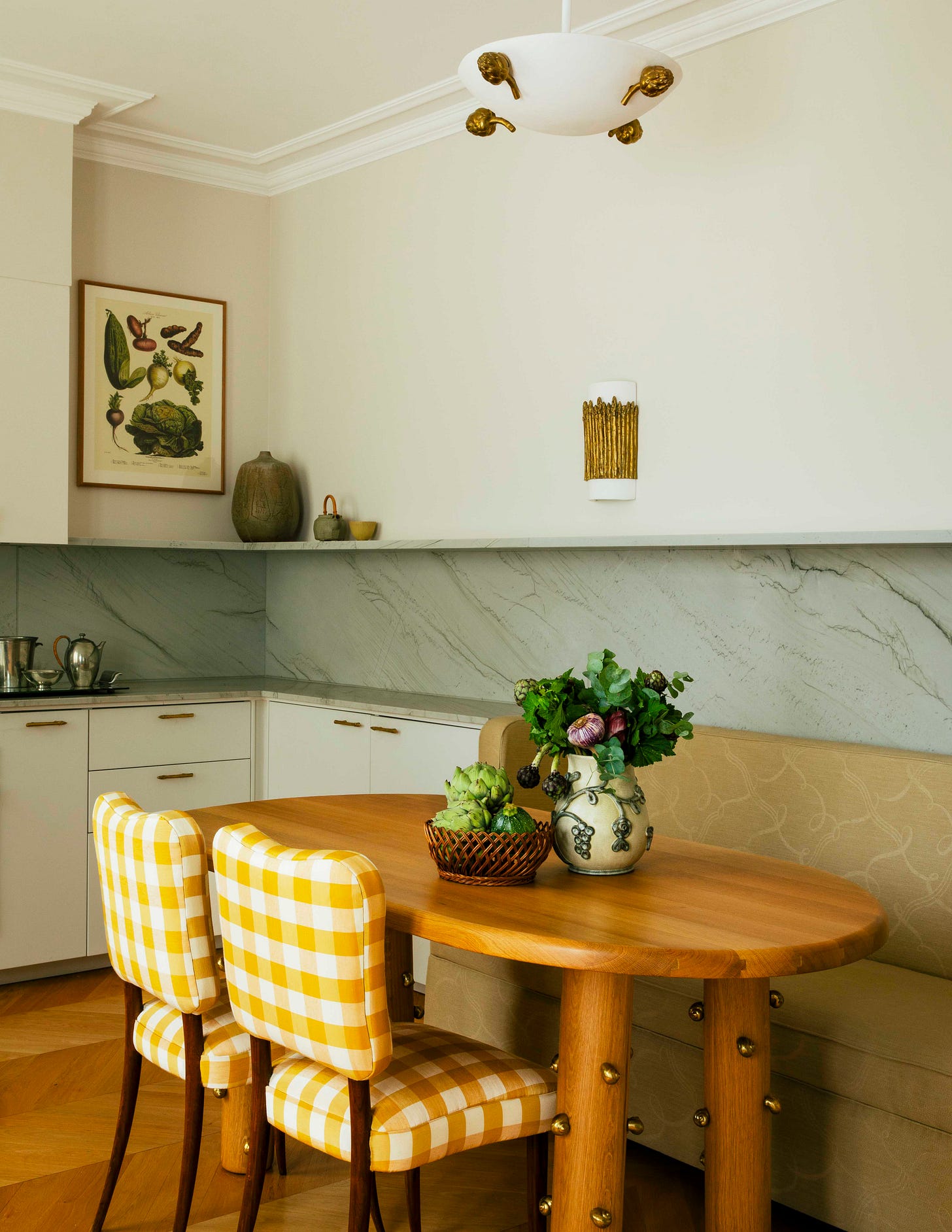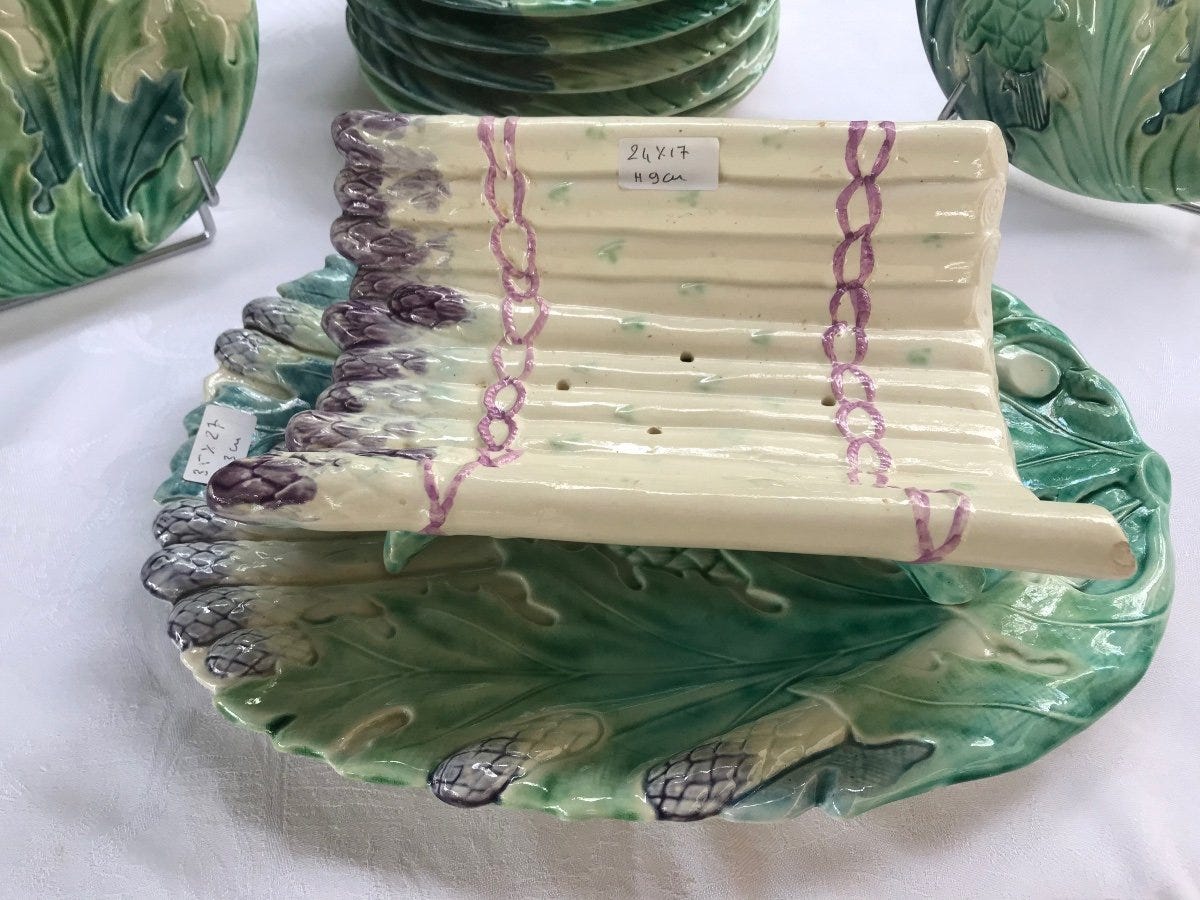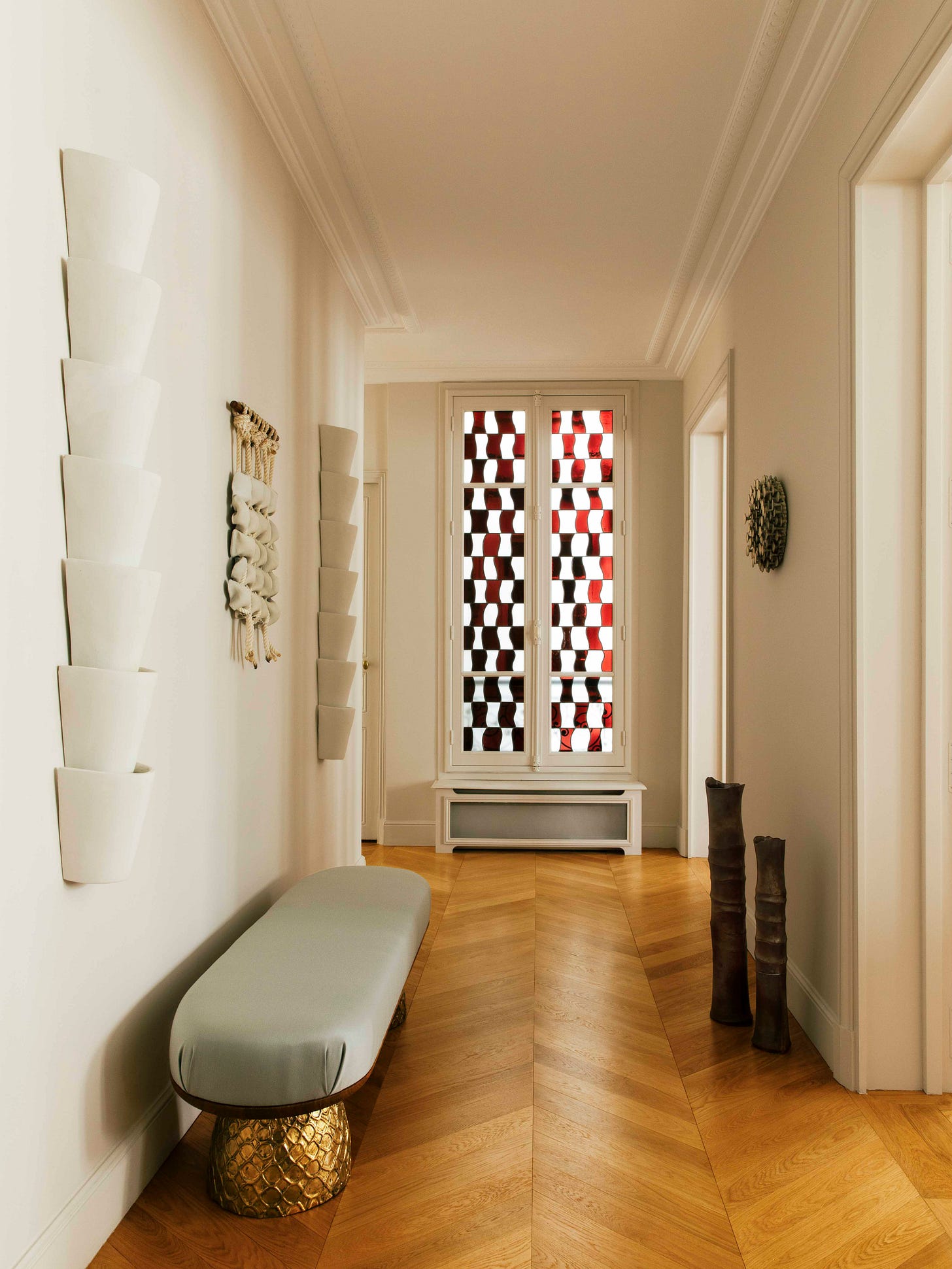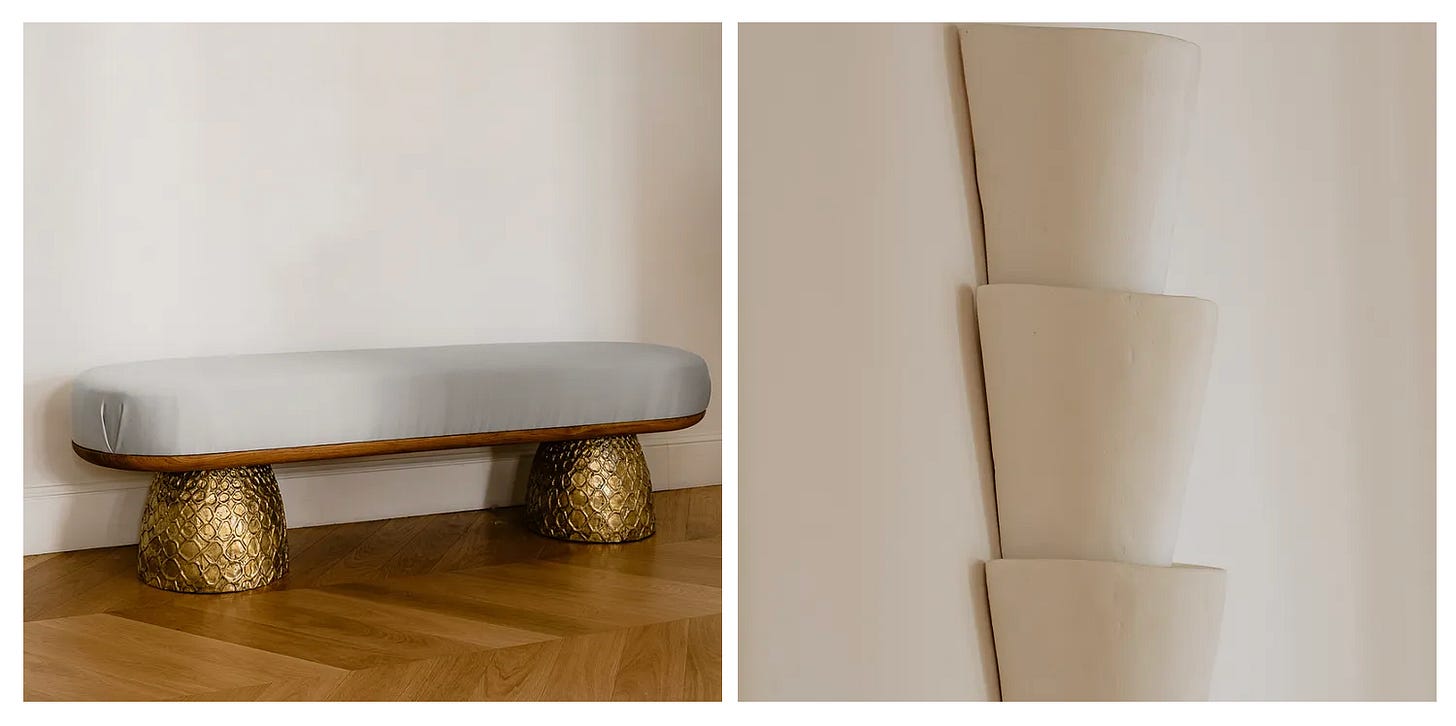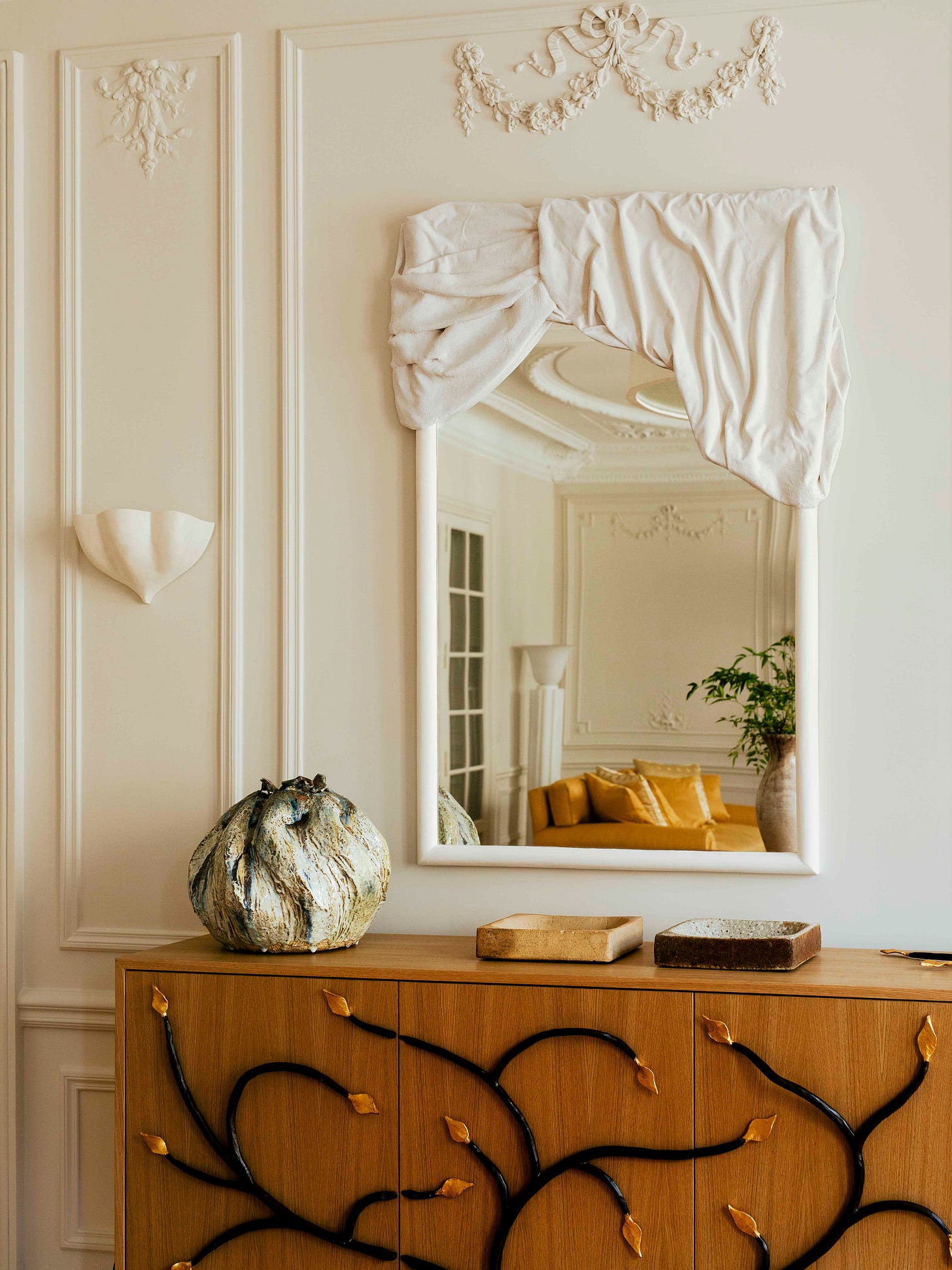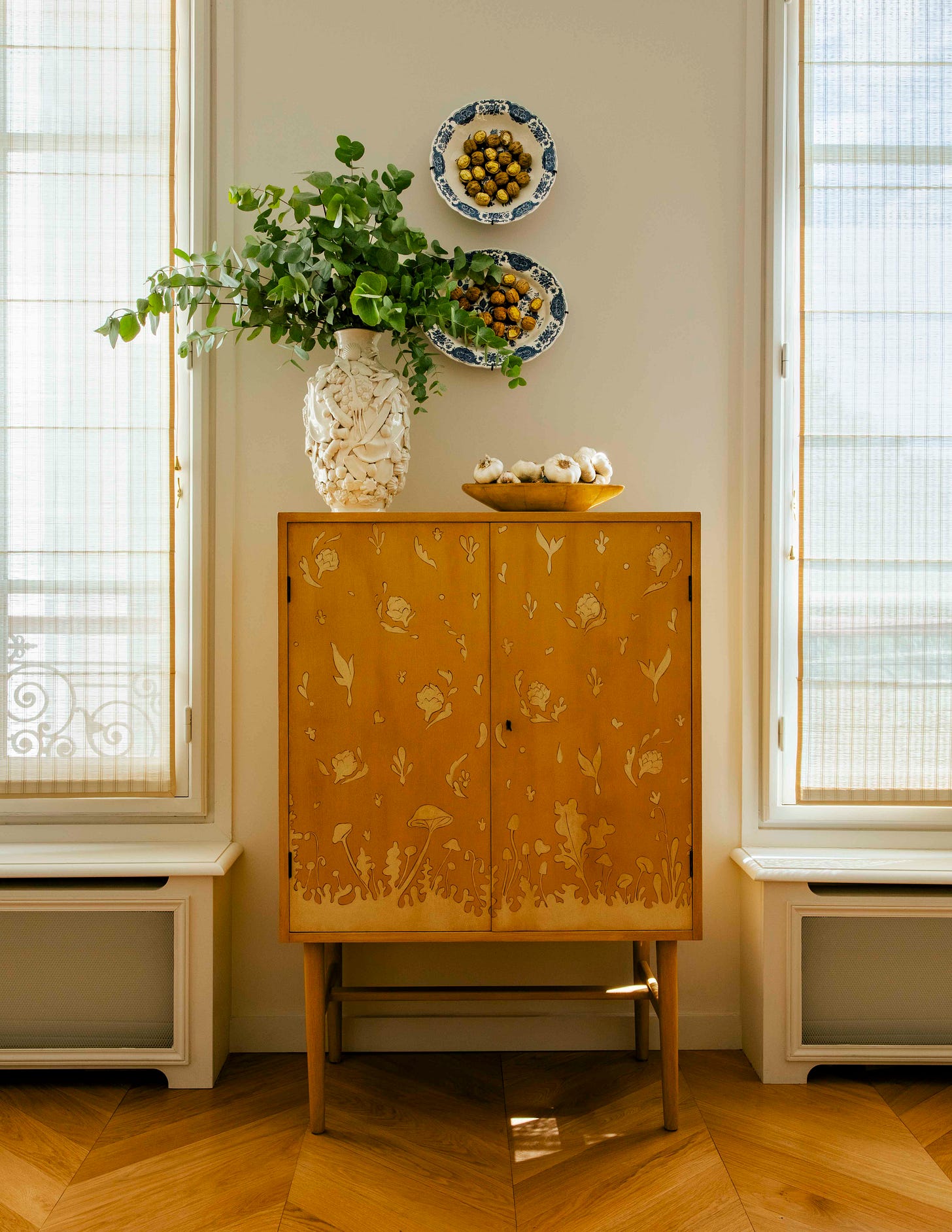Behind the Design: Sarah Chirazi
The Haussmann-style apartment on the Left Bank that put Chirazi on my radar.
Whether I’m taking in art at a museum, shopping for clothes in a boutique or flipping through the pages of a magazine, I have found that it is the color story of that painting, clothing or picture that pulls me in. While I’m not an overly colorful person — transparently I wear mostly neutrals — there are certain colors that I gravitate towards thanks to the warmth they bring.
I spotted Sarah Chirazi’s work while on Instagram the other day and immediately paused — the stunning Haussmann-style apartment that she recently designed felt like a warm hug with straw yellow accents and creamy walls. After a few clicks I was on her website, learning more about her projects and furniture collections. Born in Dakar to Lebanese parents, Chirazi grew up at the crossroads of various influences. From her childhood in Dakar, in a house filled with Art Deco furniture and works by contemporary Senegalese artists, she inherited a taste for blending styles.
I reached out to Chirazi, wanting to learn more about the magical apartment that drew me in, how she got to where she is today and what’s in store for her next. Here's what she shared for my Substack audience.
Let’s start at the beginning. Can you share how you got your start as an interior architect and designer?
After a detour into graphic design, I decided at the age of 30 to go back to school and studied interior design and architecture at the Camondo School. It was a difficult choice to go back at 30, but I'm glad I did it. After graduating, I worked for agencies for ten years, including those of India Mahdavi and Caroline Sarkozy, where I deepened my practice and knowledge of decorative arts. I then started my agency in 2022, when I began projects of my own.
It was your recent project, a Haussmann-style apartment on the Left Bank in Paris, that brought me to discover your work. The home is incredibly warm and inviting. What inspired the design?
Thank you! I wanted to keep the Haussmannien architectural style envelope/box. I mixed different furniture styles and periods and added a touch of modernity to give the feeling as if the furniture had always been there. Including a diversity of references and periods is really important in my work as well and I like to believe it helps to create a warm and inviting environment.
The color palette is mostly neutral with pops of straw yellow and blue—which I love (my sofa is straw yellow as well!). How was this palette determined?
Ahhh I really love this color!! It's a color that was made to measure for this project and same with the blue. I collaborated closely with Manufacture Royale Bonvallet — we worked with them to make the shades and test until we found the right color.
As soon as I walked in, I loved the atmosphere of this bright, spacious apartment. I chose a single color for all the walls in the apartment, as I wanted to keep this soft and calm atmosphere. And I wanted to add a cheerful touch, first with the straw yellow sofas and then with this kind of gray steel blue but a bit off (for me off means calm). The key word is really cheerful.
Many pieces that fill the apartment are vintage—to align with the aesthetic of the 1940s. What was your process for sourcing furniture?
I go almost every Friday to the Saint Ouen flea market, because I love walking around there and it's a nice change from being in front of my computer or on building sites every day. I work with many of the sellers there and trust their taste.
You have two collections—the Dakar Collection and the Veggie Collection that both show up in the home. How did those originate?
The first piece in the Veggie Collection was the Asper sconce, I was looking for something fun for this kitchen. It all started with my mother's asparagus-shaped serving dish, in France we call this kind of dish a barbotine (seen below), that’s when I had the idea to make this dish a sconce and add a Parisian style with the base in plaster.
And this opened up an infinite number of possibilities, from which flowed the handles, and then the Margot table with the bronze snails. The Veggie Collection was really created thanks to this project!
The Dakar Collection was developed a few years ago when I first designed a house in Senegal — the goal was to produce all of the lighting and furniture there. I am very proud of what we were able to achieve with both of these collections.
Are you working on any new collections or projects that you can share a bit about?
My first exhibit is in a month, in a Gallery located in the 6th arrondissement of Paris. The exhibition will feature the Dakar collection, to which I have added several pieces. It will also include the Paris Collection, whose first piece was created for the Cité Vaneau project, the draped plaster mirror (in the dining room) Dorothy.
The Paris Collection is my phantasmagorical vision of a French style, it unveils a few pieces of a dream decor, including a double-faced suspension, theatrical sconces and off course the plaster mirror, Dorothy. The Paris Collection is really centered about plaster. I arrived in France at the age of 20 from Senegal, and that's when I discovered plaster, cornices and moldings. It was love at first sight.
The Veggie Collection will be featured in an upcoming exhibit in September with the launch of rug collection I designed for Parsua Chevalier Gallery, on the theme of vegetables and the Veggie Collection universe.
Lastly, do you have any advice for someone interested in a career in interior design?
My advice is to work for agencies and learn from them. Studying is good, but when you work at an agency that is how you really learn to be an interior designer and acquire skills. So be patient.
You can see more of Sarah’s work at www.sarahchirazi.com or by following her on Instagram at @sarahchirazi.
Xx Charlotte

